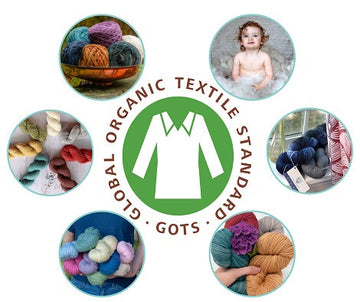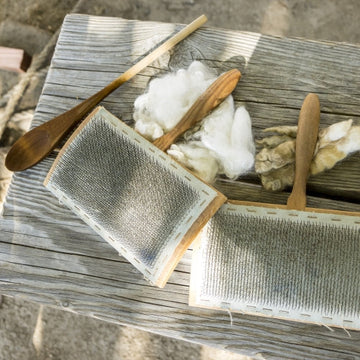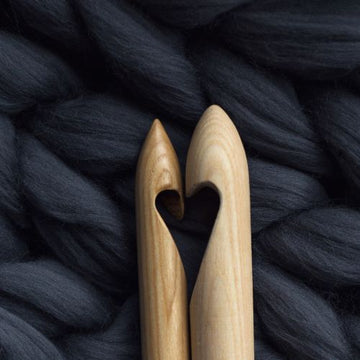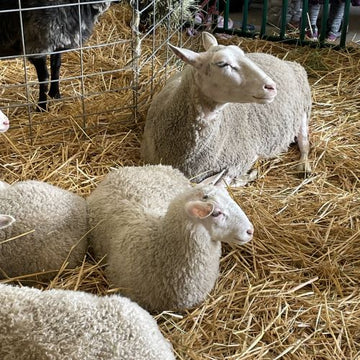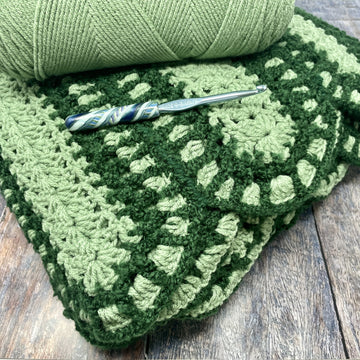Dive into the story of how organic yarn goes from being a fluffy sheep’s coat to the cozy shawl you wrap around your shoulders on a chilly evening.
Ever wondered about the backstory of your favorite organic yarn? It’s quite the journey, from happy sheep grazing in green pastures to the snuggly shawl you can’t wait to show off.
We’re zooming in on how those organic fibers are made without stepping on Mother Nature’s toes – or any sheep’s, for that matter. This isn’t just about turning fleece into yarn; it’s about doing it right, respecting the environment, and keeping things clean and green.
Ethical Farming - Where It All Begins
The story of organic yarn begins in the pastoral haven where sheep roam freely, basking in the sunlight and breathing in the fresh air.
Ethical farming practices are the cornerstone of this idyllic scenario, prioritizing animal welfare, sustainable farming practices, and environmentally friendly processing methods. Here, sheep are not just wool-bearers but respected members of the farm, living in conditions that allow them to flourish naturally.
Skilled shearers are vital, ensuring the shearing process is quick and causes minimal stress or harm to the sheep. Shearing is typically done once or twice a year, depending on the breed and climate, to ensure the sheep are comfortable and not overburdened by their wool.
Next up is quality pasture management - organic sheep farmers use rotational grazing systems to prevent overgrazing and maintain excellent soil. This commitment to ethical farming is just one aspect of producing yarn that's not only beautiful but also bears the mark of responsibility towards our planet and its inhabitants.
The Nitty-Gritty of Fleece to Organic Yarn
Once sheared, sheep's wool enters the initial stage of processing: cleaning. This step is crucial as wool naturally contains lanolin, a greasy substance, along with dirt and debris from the pasture. To remove these impurities, the wool is washed in tanks or vats filled with water and organic, biodegradable detergents. This choice of cleaning agents reflects a commitment to sustainability, ensuring that the process is gentle on the environment as well as on the fibers themselves.

After the wool is clean and dried, it proceeds to carding. During this phase, the tangled wool fibers are gently brushed, either by hand or machine, depending on the scale of operation. The goal is to disentangle, clean further, and align the fibers, preparing them for spinning. Carding not only smooths the fibers but also helps to blend them, improving the uniformity and strength of the yarn.
Spinning the wool into yarn is where the magic happens. This process can vary from traditional hand-spinning methods to modern, mechanized techniques. Organic yarns are often dyed with natural or low-impact dyes, which are less polluting and safer for workers and the environment.
Throughout the entire process, from fleece to yarn, there is a conscious effort to minimize waste and conserve resources. Scraps and shorter fibers collected during carding and spinning are not discarded; instead, they can be repurposed into insulation materials, padding, or even art supplies, embodying the principle of zero waste.
Other Environmental Considerations
Choosing organic yarn is not just a personal preference; it's a stand for the health of our planet and our own well-being. Wool processing (cleaning, spinning, dyeing) in an ethical manner focuses on minimizing chemical use, water waste, and energy consumption. This often involves using natural dyes and recycling water.
This approach has profound implications, from ensuring the safety of the farmers and their sheep to preserving the quality of our soil and water. Farms and facilities producing organic fibers must adhere to strict standards, such as the Global Organic Textile Standard (GOTS), ensuring that their practices meet environmental and social criteria.
Moreover, organic yarns are kinder to sensitive skin, free from irritants that can cause discomfort or allergic reactions. By choosing yarns devoid of chemicals, we can support a cycle of health and sustainability that benefits everyone involved - from the sheep to the knitter.
Seeing Your Skeins in a New Light
As we wrap up our journey from sheep to shawl, it's clear that the story behind organic yarn is woven with threads of care, responsibility, and love for our planet. Next time you pick up a skein of organic yarn, remember the journey it has undertaken, the hands that have nurtured and crafted it, and the philosophy it embodies.






